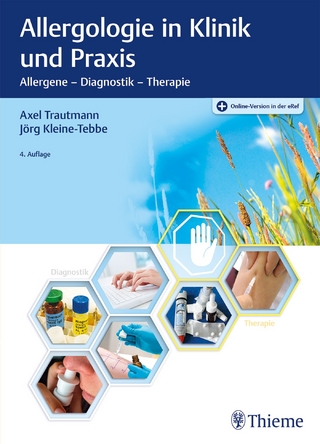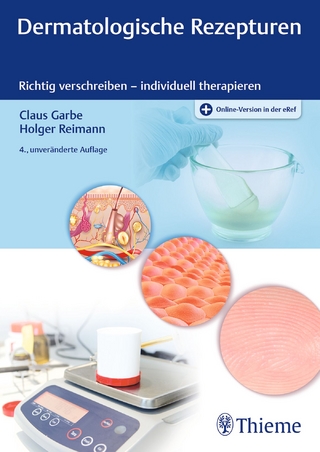
Skin Models
Springer Berlin (Verlag)
978-3-642-70389-8 (ISBN)
Prof. Dr. med. Gerd Plewig, Ärztlicher Direktor des Klinikums der Ludwig-Maximilians-Universität München (2002-2006).
In Vivo Models.- Human Model for Acne.- Models to Study Follicular Diseases.- Models for Wound Healing.- Sunscreen Evaluation by Mouse Spectrophotometric and Human Assays.- The Rhino Mouse: Retinoid Effects on a Model of Keratin Accumulation.- Further Studies with Models for the Transepidermal Elimination Process.- Induction of Cutaneous Melanocytic Tumours by N-Ethyl-N-Nitrosourea in the Mongolian Gerbil (Meriones Unguiculatus).- Amphibian Skin as a Model in Studies on Epidermal Homeostasis.- Transplantation Studies on Solar Keratoses in Nude Mice.- Modelling for the Inflammation of Acne.- New Models for Testing Skin Toxicity.- Human Cutaneous Pharmacokinetics In Vivo.- The Vasoconstrictor Test as a Model for Developing Topical Formulations.- Skin Models in the Understanding of the Physiological and Pathological Properties of Collagen.- Applications of the Diazacholesterol Animal Model of Ichthyosis.- The Transcutaneous Oxygen Pressure (tcPO2) as a Non-Invasive Measurement of Aerobic Skin Metabolism and Skin Permeability in Psoriasis.- Experimental Contact Dermatitis Using 2,4-Dinitrochlorobenzene in Humans.- In-Vivo-UVA-Tests: Erythema, Pigmentation, Phototoxicity.- Thermography as a Model for Cutaneous Vascular Responses.- The Long-Haired Syrian Hamster: An Animal Model for Androgen Induced Hair Growth.- Biochemical Markers in the Mouse Tail Model of Psoriasis.- Corneocyte Exfoliative Cytology: A Model to Study Normal and Diseased Stratum Corneum.- Modulation of EGF Receptors during Epidermal Hyperplasia.- Comparative Study of the Keratin Polypeptide Profiles in Human and in Pig Hyperkarotic Scabies.- In Vitro Models.- Role of Extracellular Matrix in Skin Morphogenesis, Analysed by Dermal Cell Cultures.- The Development of Epidermis In Vitro. Electronmicroscopic andAutoradiographic Studies in the Limb Bud Culture.- In Vitro Perfusion of Human Skin.- The Use of Human Scalp and Abdominal Skin as In Vitro Models for Percutaneous Absorption.- An In Vitro Human Skin Model for Assaying Topical Drugs against Dermatophytic Fungi.- In Vitro Models for Cutaneous Phototoxicity.- HET (Hen's Egg Test) in Toxicological Research.- Use of Uninvolved Psoriatic Epidermis as an In Vitro Model for Testing the Anti-Phospholipase Activity of Glucocorticoids.- Skin Fibroblast Monolayers: A Suitable Case for Treatment?.- Model for Biochemical Studies on the Mechanisms Underlying the Regulation of Cholesterol Synthesis.- A Model for Morphological Studies on Ligand-Receptor Complexes.- Use of In Vivo and In Vitro Test Systems as Predictors of the Cutaneous Irritancy of Synthetic Detergents (Syndets).- Lectin Induction of Pemphigus and Phemphigoid-Like Bullae in Organ Cultured Human Skin.- On the Non-Random Distribution of Dividing Cells.- High Doses of Antigen-Nonspecific IgG do not Inhibit Pemphigus Acantholysis in Skin Organ Cultures.- Permeation of Drugs through Human Skin: Method and Design of Diffusion Cells for In Vitro Use.- Mathematical and Physical Models.- Modelling the Scattering and Absorption of Light by the Skin.- Mathematical Models for the Ultraviolet Optics of Human Epidermis.- Simulation of Diffusion in Skin.- An Interactive Computer Model as a Laboratory Tool for Research on Epidermal Cellular Interactions.- Sound Skin Models - Acoustic Properties of Epidermis and Dermis.- In Vitro Test Systems for Evaluation of the Physical Properties of the Skin.- The Use of Statistical Models Employing Analysis of Variance for Efficient Analysis of Data.
| Erscheint lt. Verlag | 17.11.2011 |
|---|---|
| Zusatzinfo | XXII, 438 p. |
| Verlagsort | Berlin |
| Sprache | englisch |
| Maße | 170 x 244 mm |
| Gewicht | 793 g |
| Themenwelt | Medizin / Pharmazie ► Medizinische Fachgebiete ► Dermatologie |
| Schlagworte | Dermatitis • Haut • Psoriasis • Skin • Skin Disease |
| ISBN-10 | 3-642-70389-5 / 3642703895 |
| ISBN-13 | 978-3-642-70389-8 / 9783642703898 |
| Zustand | Neuware |
| Haben Sie eine Frage zum Produkt? |
aus dem Bereich


